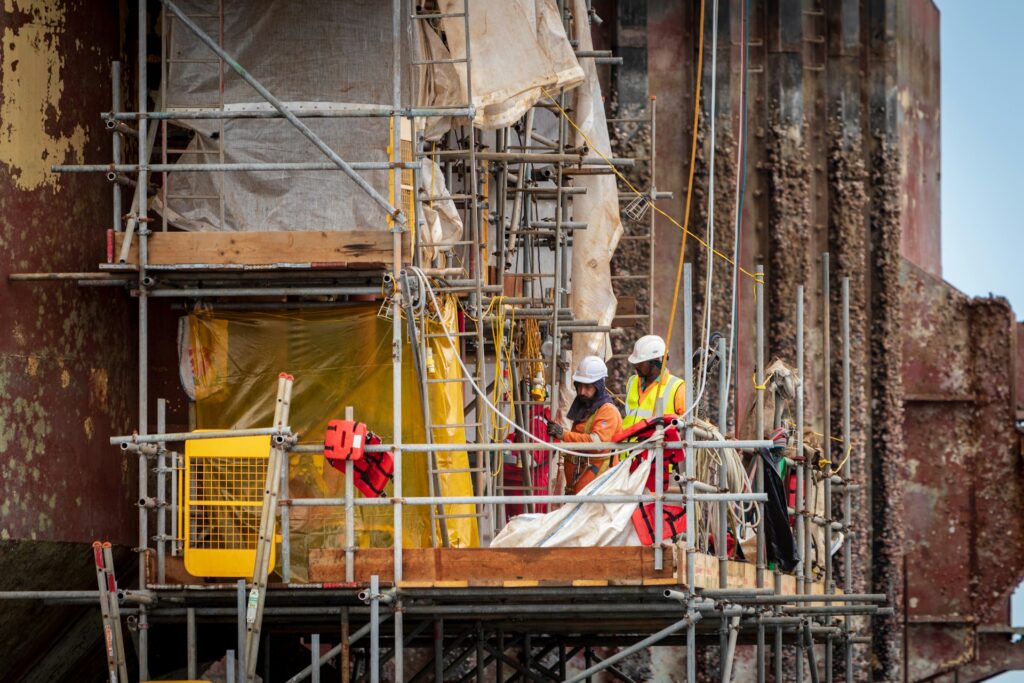
Your home’s foundation is its backbone, a critical component that ensures the integrity and stability of the entire structure. When foundation issues arise, they can lead to a cascade of problems, resulting in costly and time-consuming repairs.
As a homeowner, it’s essential to understand the pile repair process to safeguard your investment and maintain your property’s value.
This comprehensive guide will walk you through every step of repairing piles, providing you with the knowledge you need to keep your home stable and secure.
From identifying early signs of foundation distress to understanding the various repair methods and their benefits, you’ll gain a clear, professional insight into ensuring your home’s longevity.
Understanding the Importance of Pile Repair
Why Pile Repair Matters
Foundation issues can cause several problems in your home. From cracked walls to uneven floors, the signs are often easy to spot. Knowing the importance of pile repair can save you from bigger headaches down the road. Not only does it maintain the structural integrity of your home, but it also retains its market value.
Homeowner Tips for Pile Repair
By understanding the pile repair process, you’re better equipped to handle any issues that arise. This knowledge can also help you to choose the right professionals for the job, ensuring that the work is done correctly and efficiently. Whether you’re dealing with minor or major foundation issues, the first step toward a solution is to learn more about structural repair.
Common Signs That You Need Pile Repair
Knowing when to call for pile repair is half the battle. Here are some homeowner tips to identify common signs that your home might need structural repair:
Cracked Walls and Ceilings
If you notice cracks forming on your walls or ceilings, it could be a sign of foundation issues that require immediate attention.
Uneven or Sagging Floors
Uneven or sagging floors are often an indication of underlying problems with your home’s foundation. This issue can worsen over time if not addressed promptly.
Doors and Windows That Stick or Don’t Close Properly
When doors and windows start sticking or refuse to close properly, it might be due to foundation shifts that necessitate professional assessment.
Initial Assessment and Inspection
The initial assessment and inspection are pivotal steps outlined in any comprehensive foundation repair guide. This phase begins with a thorough examination of your home’s foundation to accurately identify the extent of any damage. A professional inspector will:
- Conduct a visual inspection: Look for visible signs of distress, such as cracks or uneven flooring.
- Use specialized equipment: Employ tools like moisture meters or laser levels to assess the foundation’s condition more precisely.
- Document findings: Provide a detailed report outlining the inspection results and recommended repair solutions.
This crucial step not only helps determine the most appropriate repair method but also gives you a clear understanding of the costs involved. By following a structured foundation repair guide, you can ensure that your home remains stable and secure for years to come.
Choosing the Right Pile Repair Method
Choosing the right pile repair method is crucial for maintaining the stability and safety of your home. There are several techniques available, each tailored to address specific types of damage and soil conditions. Here’s a quick foundation repair guide to help you understand your options:
- Helical Piles: Ideal for stabilizing foundations in areas with unstable soil. These screw-like steel shafts are drilled into the ground to provide robust support.
- Push Piers: Perfect for lifting and stabilizing sinking foundations. These hydraulic-driven steel piers transfer the weight of the structure to more stable soil or bedrock.
- Concrete Piles: Suitable for larger structures or severe damage. This method involves pouring concrete into drilled holes to create sturdy support pillars.
Choosing the right method depends on the specific issues identified during the inspection. Consulting with a professional will help you make an informed decision that best suits your home’s needs.
The Pile Repair Process Explained
Site Preparation
Before any structural repair can begin, the area around the foundation is cleared, creating essential access points. This ensures that the repair team can work efficiently and safely.
Installation
The installation method varies based on the type of piles used:
- Helical Piles: Steel shafts are screwed into the ground using specialized equipment.
- Push Piers: Piers are driven deep into the soil or bedrock with hydraulic pressure.
- Concrete Piles: Holes are drilled, and concrete is poured to form robust piles.
Lifting and Stabilization
Once the piles are in place, the foundation is meticulously lifted and leveled with jacks or hydraulic systems. The structure is stabilized by securing the piles to the foundation, ensuring a solid and durable fix.
Final Inspection and Clean-Up
The final step involves a thorough inspection to guarantee the stability and alignment of the repaired foundation. Afterward, the site is cleaned up, and any displaced landscaping is restored. Depending on the extent of the damage and the repair method chosen, this process can take anywhere from a few days to several weeks.
Post-Repair Care and Maintenance
After the pile repair process is complete, ongoing care and maintenance are essential to ensure the longevity of the repairs. In this comprehensive foundation repair guide, we emphasize the importance of post-repair care. Here are some key tips to follow:
- Regular Inspections: Conduct periodic checks of your foundation for any new signs of distress.
- Proper Drainage: Ensure that water is directed away from your foundation to prevent soil erosion and water damage.
- Landscaping: Keep plants and trees away from the foundation to avoid root-related issues.
By adhering to these maintenance tips, you can keep your foundation in good shape and avoid future problems. Incorporating these practices into your routine will help maximize the benefits of the pile repair process and extend the lifespan of your foundation.
Conclusion
Foundation issues can be daunting, but understanding the pile repair process can make them more manageable. By identifying the signs of trouble early, choosing the right repair method, and following through with proper maintenance, you can ensure your home remains safe and stable.
If you’re facing foundation problems, don’t wait. Learn more about the pile repair process and take action today. Consult with a professional to get a detailed assessment and start planning your repair strategy. Your home’s stability and your peace of mind depend on it.
For more information and expert homeowner tips on foundation repair, get in touch with a team of specialists to help you every step of the way.
Last modified: October 12, 2024








